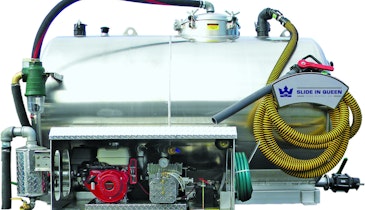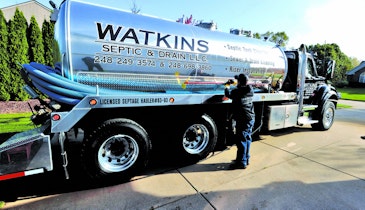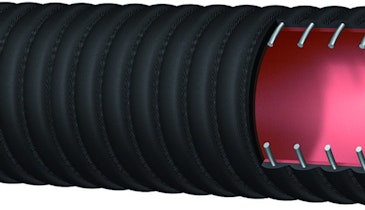Interested in Safety?
Get Safety articles, news and videos right in your inbox! Sign up now.
Safety + Get AlertsConstruction safety professionals had a reason to smile in December when the U.S. Bureau of Labor Statistics reported that deaths in the construction and extraction industries in 2021 had declined 2.6% from the prior year. Similarly, the fatality rate in these industries had declined to 12.3 per 100,000 full-time positions, down from 13.5 in 2020, indicating that all those morning safety meetings were paying dividends.
Still, the statistics weren’t entirely positive. Workers in the construction and extraction industries accounted for 951 workplace deaths in 2021, second among all business sectors, right behind delivery drivers and truck drivers (1,032). In addition, the number of worker deaths due to falls, slips and trips in the construction and extraction industries had climbed 7.2% to 370 in 2021.
Looking to the present, there were several other reasons for safety professionals to be concerned. Increased spending on infrastructure was bringing a large number of job seekers to the construction industry, many of whom lacked safety training. In addition, the graying of the workforce and the pandemic-fueled wave of retirements have left many job sites with fewer experienced workers.
Fortunately, technology is making it easier for construction companies to get their workers up to speed.
OSHA training at your fingertips
Construction safety has been a hot topic as the pace of infrastructure construction projects has accelerated across the nation. In April 2023, a construction firm in Brooklyn, New York, faced accusations that it accepted cash in exchange for falsified records stating that workers had completed their required Occupational Health and Safety Administration training.
The incident underscores the importance of vetting third-party training providers. In 2022, the New York City Department of Buildings invalidated about 6,000 site safety cards after a single training firm’s practices were revealed to be substandard, according to the agency.
OSHA has developed an online training platform featuring 40 construction safety training courses for workers and contractors, making it easier than ever to complete the needed classes and certifications.
All courses offer printable certificates that are immediately available upon successful completion, as well as laminated cards mailed to workers within two weeks. Those certifications not only allow workers to show off their accomplishments, but they help companies to comply with their insurance and regulatory obligations.
Although many entities provide safety training, only OSHA-authorized cards issued by the Department of Labor make workers certified to work on construction sites, the agency says.
Course materials are available anytime, so workers can learn at their own pace, when it’s most convenient for them.
The list of courses is extensive, covering topics such as confined-space entry, bloodborne pathogens, concrete and masonry, cranes and rigging, drug and alcohol abuse, electrical safety, emergency action plans, ergonomics, excavations, fire prevention, hand and power tools, hazardous materials, materials handling and storage, welding and cutting, respiratory safety, and violence in the workplace.
OSHA and its third-party training providers offer 10-hour and 30-hour training courses for construction professionals. The 10-hour Construction Industry Outreach Training Program provides general awareness for entry-level workers and covers how to recognize and prevent hazards on job sites. In addition to basic safety training, workers must receive job-specific training covering any hazards on the job site, according to OSHA.
Many construction companies and jurisdictions require workers to complete OSHA 10 training before working, the agency says. Employers and local or state agencies may require workers to repeat their OSHA 10 training every three to five years as a refresher.
OSHA’s 30-hour course is designed for supervisors. It covers their general safety responsibilities as managers and includes more task-specific safety awareness topics than the 10-hour course. These courses give safety directors, foremen, managers, field supervisors and crew leads the extra information they need to comply with workplace safety requirements, OSHA says.
Safety training for body and mind
Safety isn’t just about keeping the physical body free from harm. To that end, Hongtao Dang, assistant professor of construction management at Washington State University, said in May that he’s developing a training program to improve mental health and “psychological safety” in the construction industry. A former construction worker before he joined academia, Dang is using data from construction firms to produce training modules aimed at addressing this critical issue.
“I know what the job site culture looks like — how good or bad it can be," he told WSU Insider. "From that experience, I think it’s important for me to be a catalyst to potentially transform the job site culture and to make it more inclusive and safer for people to work there.”
Men in construction are approximately four times more likely than the average American to commit suicide, according to the Centers for Disease Control and Prevention. The agency says contributing factors include stress, time away from home, pain from injuries, and the uncertainty of seasonal work. A study from the Substance Abuse and Mental health Administration also found that 15% of construction workers are impacted by substance abuse — higher than the national average.
The Construction Safety Week team offers a Mental Wellness Field Guide that can be offered as a resource throughout the year. Recognizing and normalizing conversations about mental health and well-being are vital ways that construction companies can play a role in turning the tide toward an overall safer environment for everyone.
About the author: AEM is the North American-based international trade group representing off-road equipment manufacturers and suppliers, with more than 1,000 companies and 200-plus product lines in the agriculture and construction-related sectors worldwide. AEM has an ownership stake in and manages several world-class exhibitions, including CONEXPO-CON/AGG.






